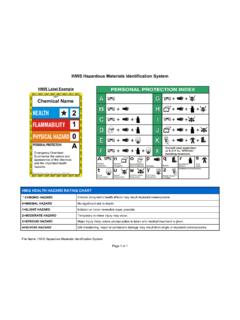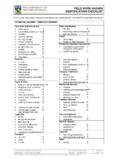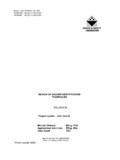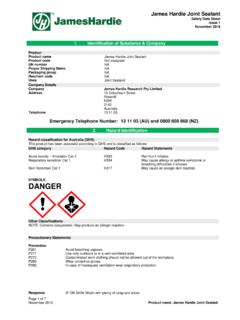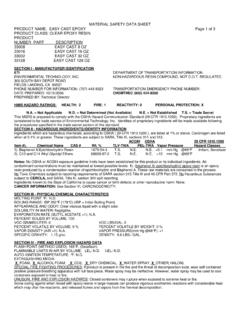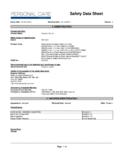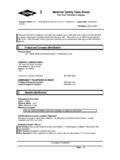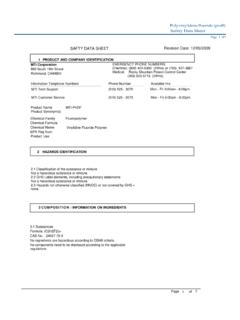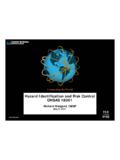Transcription of HMIS HEALTH HAZARD RATING CHART - Liquid Ice
1 HMIS hazardous Materials identification system File Name: HMIS hazardous Materials identification system Page 1 of 1 HMIS Label Example Chemical Name 0 AEmergency Overview: Summarize the nature and appearance of the chemical and the important HEALTH hazards . 12* HMIS HEALTH HAZARD RATING CHART * CHRONIC HAZARD Chronic (long-term) HEALTH effects may result repeated overexposure. 0=MINIMAL HAZARD No significant risk to HEALTH . 1=SLIGHT HAZARD Irritation or minor reversible injury possible. 2=MODERATE HAZARD Temporary or minor injury may occur. 3=SERIOUS HAZARD Major injury likely unless prompt action is taken and medical treatment is given. 4=SEVERE HAZARD Life-threatening, major or permanent damage may result from single or repeated overexposures. HMIS hazardous Materials identification system File Name: HMIS hazardous Materials identification system Page 2 of 2 HMIS FLAMMABILITY HAZARD RATING CHART 0=MINIMAL HAZARD Materials that will not burn.
2 1=SLIGHT HAZARD Materials that must be preheated before ignition will occur. Includes liquids, solids and semi solids having a flash point above 200 F. (Class IIIB) 2=MODERATE HAZARD Materials which must be moderately heated or exposed to high ambient temperatures before ignition will occur. Includes liquids having a flash point at or above 100 F but below 200 F. (Classes II & IIIA) 3=SERIOUS HAZARD Materials capable of ignition under almost all normal temperature conditions. Includes flammable liquidswith flash points below 73 F and boiling points above 100 well as liquids with flash points between 73 F and 100 F. (Classes IB & IC) 4=SEVERE HAZARD Flammable gases, or very volatile flammable liquids with flash points below 73 F, and boiling points below 100 F. Materials may ignite spontaneously with air. (Class IA) HMIS PHYSICAL HAZARD RATING CHART 0=MINIMAL HAZARD Materials that are normally stable, under fire conditions and will not react to water, polymerize, decompose, condense or self react.
3 1=SLIGHT HAZARD Materials that are normally stable but can become unstable at high temperature and pressures. Materials may react non-violently with water or undergo hazardous polymerization in the absence of inhibitors. 2=MODERATE HAZARD Materials that are unstable and may undergo violent chemical change at normal temperature and pressure with low risk for explosion. Materials may react violently with water or form peroxides upon exposure to air. 3=SERIOUS HAZARD Materials that may form explosive mixtures with water are capable of detonation or explosive reaction in the presence of a strong initiating source or undergo chemical change at normal temperature and pressure with moderate risk of explosion. 4=SEVERE HAZARD Materials that are readily, capable of water reaction, detonation or explosive decomposition at normal temperatures and pressures.
